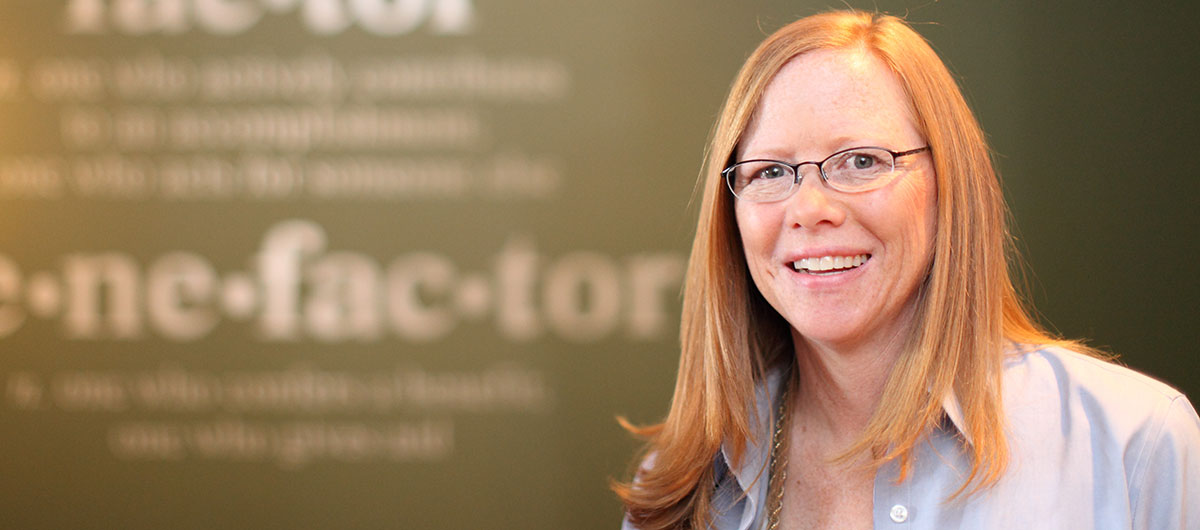Mega gifts can catapult a nonprofit’s mission. These transformational gifts do more than sustain an organization: they make big, bold ideas possible.
However, there is a gamble in pursuing big gifts with singular focus. Yes, it’s common for 90% (or more) of the dollars to come from 10% (or fewer) of your donors. And if the wealth gap widens, an ever-shrinking pool of high-net-worth households will continue to provide the lion’s share of philanthropic dollars.
But exclusive reliance on the top of the giving pyramid can be risky. If you’re counting on a handful of donors to reach your goals each year, what happens when one or more of them fails to give? Will you be able to make up the gap? And if you don’t have a strong pipeline of faithful donors ready to step up, can you afford to lose revenue while you build one?
Your organization’s long-term wellbeing depends on your ability to close gifts today and plant seeds for the future. To that end, here are three ways to nurture a healthy gift pipeline and strengthen your network of generosity.
1. Welcome and Retain First-Time Donors
MacKenzie Scott has become famous for surprising charities like the National 4-H Council with multi-million-dollar gifts. She does her research independently and typically makes philanthropic decisions without any prior involvement with the cause.
But this is not how most donors operate. Most donors will start small — perhaps with an average initial gift of $250. They’ll test the waters. And they’ll pay attention to how you respond to their modest gifts before increasing their support.
Research bears this out. The Bridgespan Group analyzed a sample of 165 gifts of $10 million or more to explore the giving patterns leading up to each one. They found that:
- 52% of grantors made between one and nine gifts before making that “big bet.”
- 32% gave 10 gifts or more before sizably increasing their support.
- Only 17% gave their $10M+ gift right out of the gate.
These numbers illustrate that the pathway toward a major gift starts with the very first gift a donor makes to your organization. But it’s also important to recognize that, even if donors never move to higher levels of giving, their support is valuable. For many, their annual gifts are the most generous they are capable of making. And collectively, these modest gifts offer your organization a firm foundation upon which your overall fundraising efforts are built.
So no matter the size of the gift, ask yourself: Are you responding to first-time gifts in a way that sets the right tone for a fruitful, long-term relationship?
Welcome New Donors Thoughtfully
The only appropriate response to a gift of any size is prompt and sincere gratitude. Whether you send an automated acknowledgement, write a handwritten note, make a personal call, or deliver a welcome package, make sure it is a “thank you” and not a request for a second gift.
Aggressive solicitation tactics (e.g. including a BRE with a thank you letter; immediately asking for a next gift in a stewardship visit) may turn prospects off rather than inspire them to make their next gift. Don’t rush the process. Demonstrate the impact each act of generosity makes at your organization. Tell good stories. And look for thoughtful ways to make first-time donors feel like they are part of something special.
Retain Donors Strategically
To build your pipeline, you need a thoughtful roadmap for inspiring donors to reach their giving potential.
The way you welcome first-time donors is the first step in retaining them. However, as many as 80% of first-time donor will not make a second gift. You should develop a robust, data-driven retention plan, a series of touchpoints to keep your organization at the forefront of your donors’ minds.
These might include:
- Emails and newsletters sharing impact stories
- Invitations to insider events
- Surveys or questionnaires to gather input and give donors a voice
- Videos that tell a powerful story about the impact of philanthropy
- Personal phone calls and visits
- Well-timed, segmented appeals
Fostering donor engagement leads to higher retention and increased giving.
2. Actively Cultivate and Celebrate Mid-Level Gifts
Mid-level gifts are powerful in their own right. In focusing heavily on securing principal gifts, some organizations may miss the opportunity to grow mid-level gifts that can have a big impact on sustaining their mission. It’s a nice side effect that it can also serve to bolster major giving efforts.
Mid-Level Gifts Fuel Your Everyday Mission
Some of your mid-level donors may make more significant gifts in the future right now, but the impact of 400 donors giving $1,000, $5,000, and $10,000 can add up to the equivalent of a handful of donors providing six-and seven- figure gifts. Mid-level gifts also tend to be undesignated or designated for budget-relieving purposes. And that means these gifts can fuel your mission each and every day.
The gift officer assigned to cultivating this portfolio is doing valuable work. In fact, they ultimately yield similar ROI as the leadership giving officer closing a handful of principal gifts.
Mid-Level Gifts Are Some Donors’ Most Generous Gifts
Generosity isn’t defined solely by the magnitude of a gift. Just as a healthy society serves the needs of all its citizens — not just the wealthy elite — a vibrant fundraising program values gifts of all sizes and donors at all levels.
For many of your donors, a $10,000 gift is remarkably generous. It could be the largest gift they have ever made. This is especially true if they’re giving out of their income, not accumulated assets. They deserve to be celebrated and recognized.
3. Comb Your Consecutive Giving Report to Identify Planned Giving Prospects
Planned gifts are often the culmination of a lifetime of support. For many donors — especially those concerned about preserving the resources they’ll need later in life — a planned gift is the safest and most beneficial way to make a sizeable contribution. The most accurate predictor of this step is loyalty.
Many excellent planned giving prospects will never make a significant outright gift. In fact, their average gift might only be $25, $50, or $75. Furthermore, they may fall under the radar when you conduct wealth screenings. In their best-selling book, Thomas Stanley and William Danko coined these understated philanthropists “millionaires next door.”
To identify these quiet but faithful prospects, take a close look at your consecutive giving report. Consider inviting loyal donors with a giving history of 10 years or more to special events. Assign them to your mid-level development officers for qualification and cultivation. With some careful stewardship, these donors may be willing to document their estate plans or even make an irrevocable planned gift like a charitable gift annuity.
Build a Major Gift Pipeline that Supports Your Organization for Years to Come
Even as you pursue the current year’s revenue goals, future success depends on a strong major gift pipeline that propels your organization forward for years to come.
To do so, welcome your new donors warmly. Cultivate and celebrate the genuine generosity of your mid-level donors. And seek out the quiet, unassuming “millionaires next door” who just might surprise you with transformational planned gifts you never saw coming.
It takes time and effort, but a stronger gift pipeline is within your reach.






